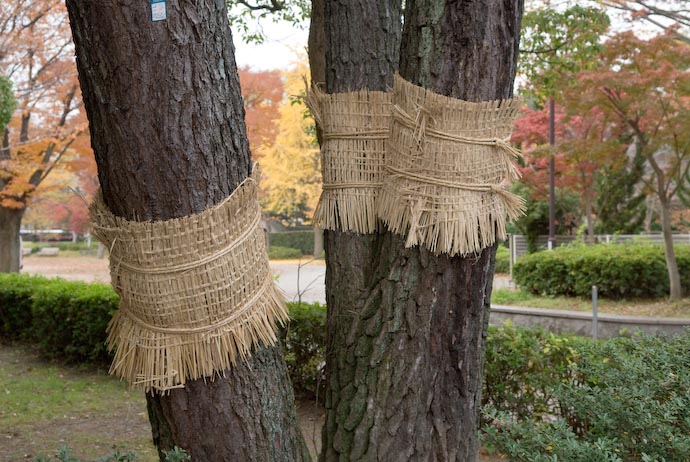
Nikon D200 + Nikkor 17-55 f/2.8 @ 38mm — 1/125 sec, f/5.6, ISO 400 — map & image data — nearby photos
Tree Snuggies
Today we had a few flakes of snow, which is all the main part of Kyoto normally gets. The outlying areas, especially up in the mountains, can get heavy amounts – one of Anthony's school friends couldn't make it to school today because of the snow in the mountains. A couple of years ago, we did get several inches of accumulation, which made the Heian Shrine quite pretty.
One sure sign of winter in Japan are the snuggies that you see appear on trees in the late fall. These komomaki straw mats – wrapped around the trunks of pines and cedars – are meant to provide the larvae of pine caterpillars an attractive place to nest for the winter. The point is not to provide cushy accommodation for the young bugs, but to kill them: in the spring, the mats are removed and incinerated, relieving the tree of a major pest.
Update: perhaps not that effective... see this Japan Times article.
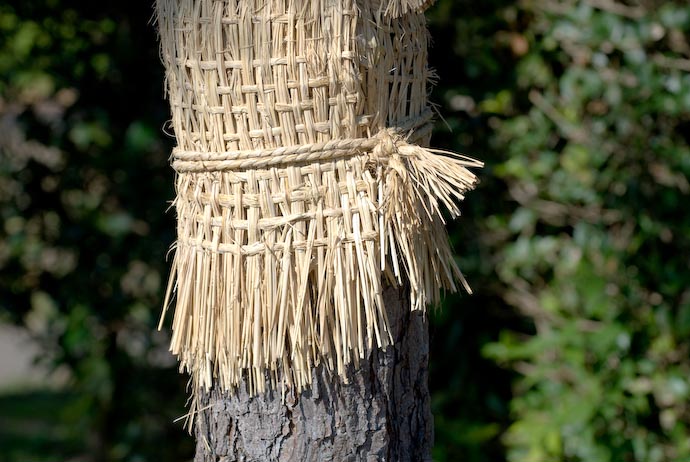
Nikon D200 + Nikkor 70-200mm f/2.8 @ 135mm — 1/750 sec, f/5.6, ISO 200 — map & image data — nearby photos
If you've never seen them before, they seem really, really odd. (Actually, they seem pretty odd even if you have seen them before.)
I took these pictures in late November, the sunnier ones on the same outing as those in my Making the Best of Bright Light in Fall-Color Photography post.
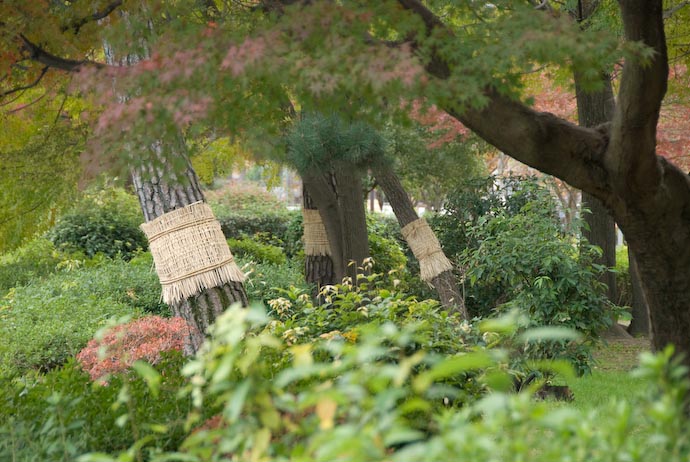
Nikon D200 + Nikkor 18-200mm f/3.5-5.6 VR @ 105mm — 1/90 sec, f/5.3, ISO 400 — map & image data — nearby photos
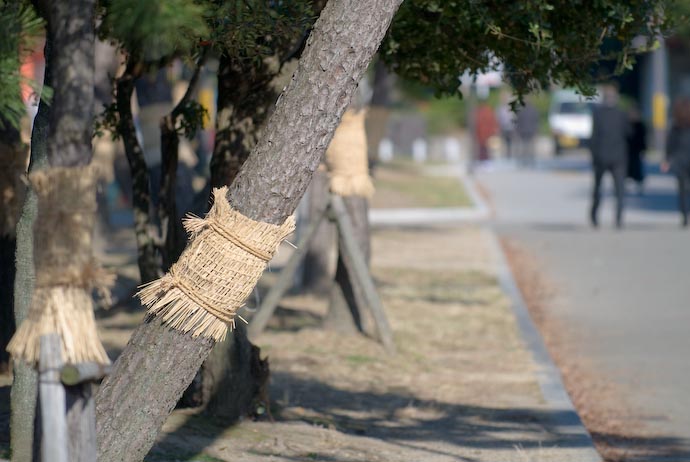
Nikon D200 + Nikkor 70-200mm f/2.8 @ 200mm — 1/2000 sec, f/3.2, ISO 200 — map & image data — nearby photos
Straw mats can also be used for more serious, all-encompassing protection:
That's a closeup of the freaky “cat in the hat” display I ran into at the Kyoto Botanical Gardens a year ago.
On a wholly unrelated note that somehow seems to be related (huh?), here are some trees being protected from the winter wind by huge walls of twig bundles.
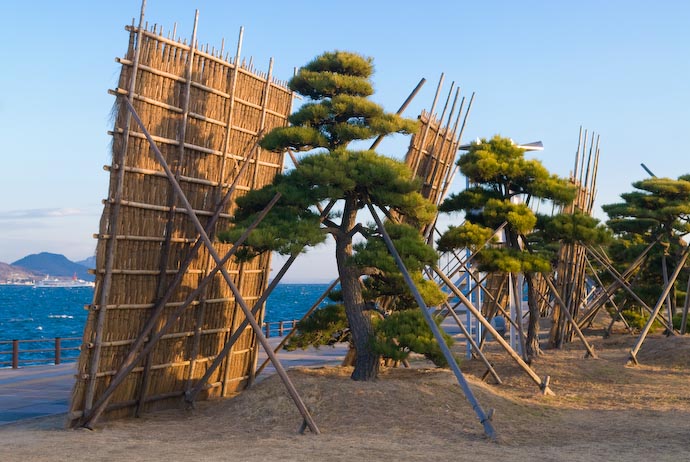
Nikon D200 + Nikkor 17-55 f/2.8 @ 38mm — 1/320 sec, f/4.5, ISO 320 — map & image data — nearby photos
Standing Against The Wind
The trees perhaps look like little bonsai, but they're more than twice my height. I took these pictures just after sunrise in Takamatsu, Japan, last month.
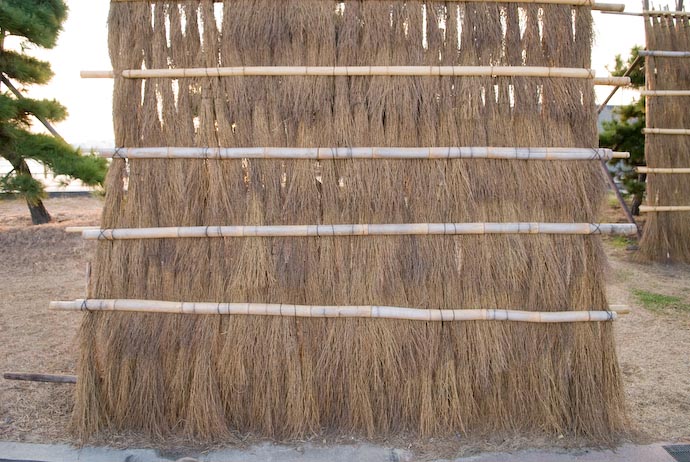
Nikon D200 + Nikkor 17-55 f/2.8 @ 17mm — 1/160 sec, f/2.8, ISO 320 — map & image data — nearby photos
There's a Tree Behind There, Somewhere
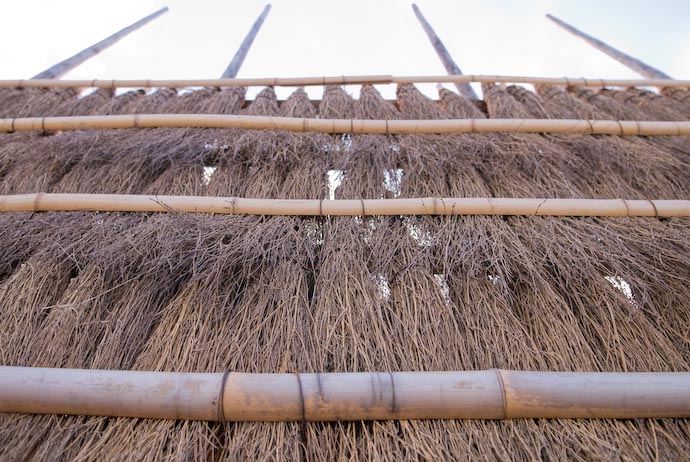
Nikon D200 + Nikkor 17-55 f/2.8 @ 18mm — 1/200 sec, f/2.8, ISO 320 — map & image data — nearby photos
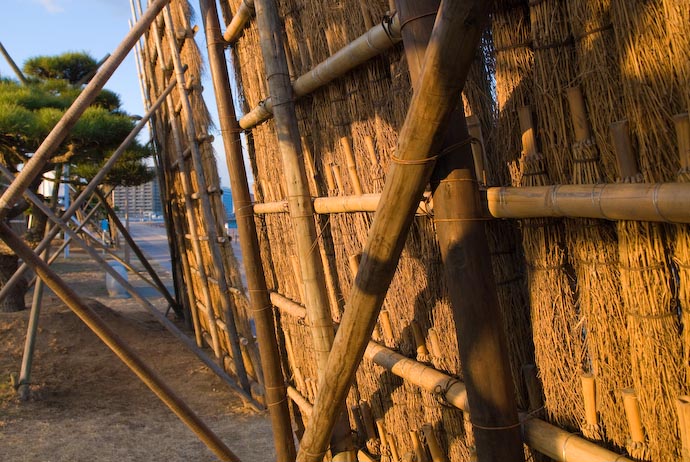
Nikon D200 + Nikkor 17-55 f/2.8 @ 17mm — 1/350 sec, f/4.5, ISO 320 — map & image data — nearby photos
In areas of heavy snow requiring more extreme measures, yukitsuri is used, which is best described as tree bondage. (That link is to a Japan Times article by Alice Gordenker. It's one of her well-researched and entertaining What the heck is that? columns that I look forward to each month.)
Back to our thatched wall, I'm not sure what exactly it's made of, but I've seen the same techniques used in walls at various shrines and temples (such as Kyoto's Hougon'in and Giouji Temples), and as a decorative veneer of an outside wall of a private residence.
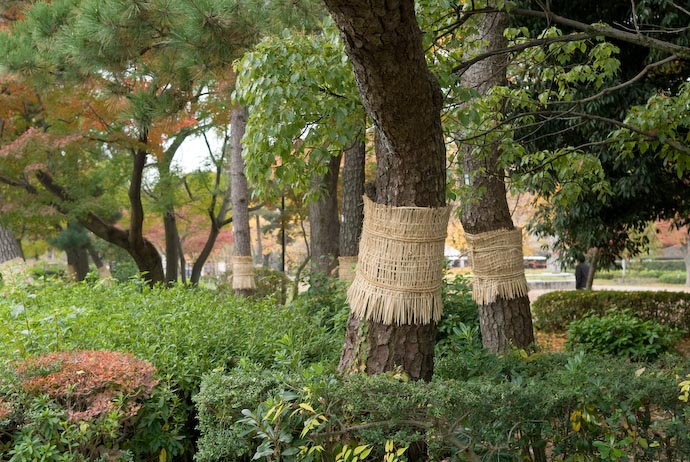
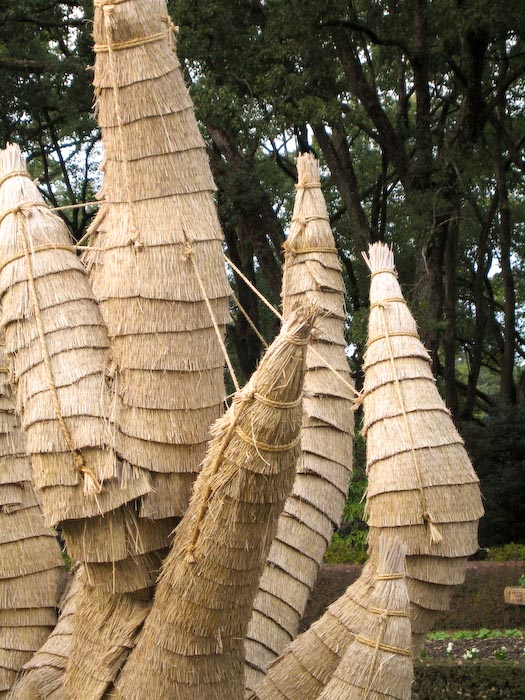
What a great post! It’s the little details that bring a country to life!
I love the approach to getting rid of the larvae too.
As do I. I wonder if it would be at all effective in fighting the Emerald Ash Borer that is beginning to be a real concern in our area.